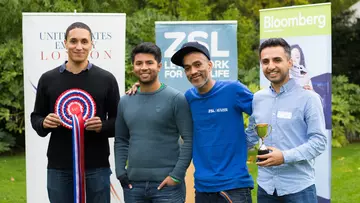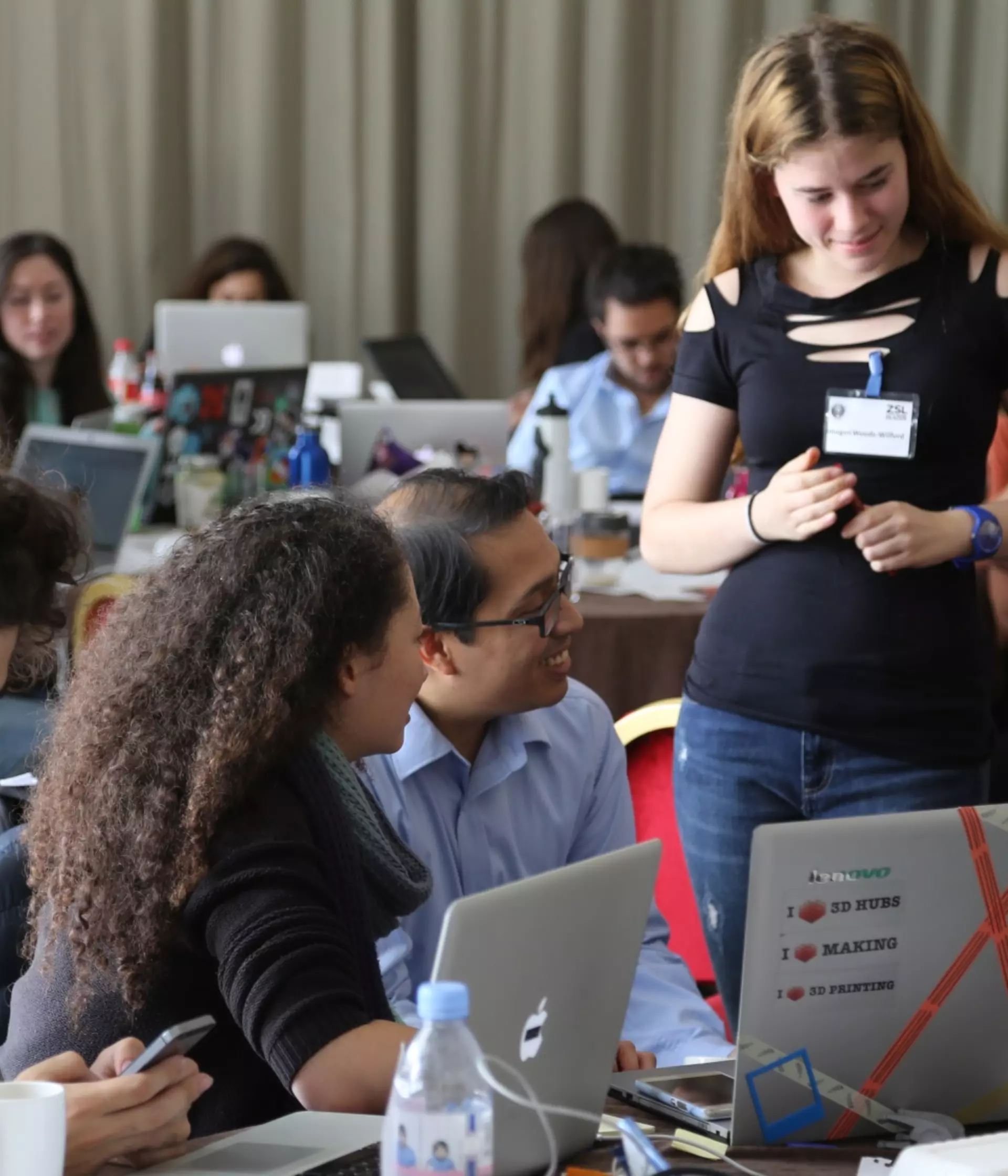
Tackling the biggest conservation challenges facing our planet requires innovation, focus, and collaboration. At ZSL, we're developing and applying technology to protect species around the world.
ZSL’s Conservation Technology Unit (CTU) has brought together business leaders, conservationists, corporations, tech start-ups, academics, engineers, communities, and impact investors, bridging the gap to create game-changing conservation technology solutions. From ‘meet-up’ workshops and hackathons, to incubator programs and support for community platforms such as United for Wildlife’s WILDLABS.net, we have helped to source big ideas to solve big challenges.
Crucially, we see a future where technologies are cheaper, and we are actively exploring how to bring the cost of technology down to a suitable price-point for limited budgets, for example with our sea turtle tags.
What was the Zoohackathon?
We ran a flagship annual collaboration event called Zoohackathon, organised by ZSL in collaboration with the U.S. Department of State and the Association of Zoos and Aquariums (AZA).
Launched in 2016, the Zoohackathon was an annual international computer coding and technology event. It brought together technical gurus, conservation experts and designers to create tools to combat some of the greatest threats facing wildlife today.

In 2017, our partner Bloomberg was proud to support Zoohackathon for a weekend of technological creativity and innovative thinking. Experts from across the world helped over 100 coders create technology solutions within 48 hours to help prevent of some of the world’s best loved species being pushed to the brink of extinction. The 2017 international winner was team ODINN (Onsite Dynamic Identification Neural Network) with the aim of improving image recognition software to better identify poaching risks. The solution triaged incoming camera trap images, dramatically reducing the rangers’ time required to sift through large numbers of images.
ZSL and team ODINN collaborated to develop their solution further, making it applicable to a variety of real-world conservation settings. We used their machine learning expertise to assess and understand cutting edge image recognition software to select, repurpose, and redesign it to make the maximum conservation impact.
